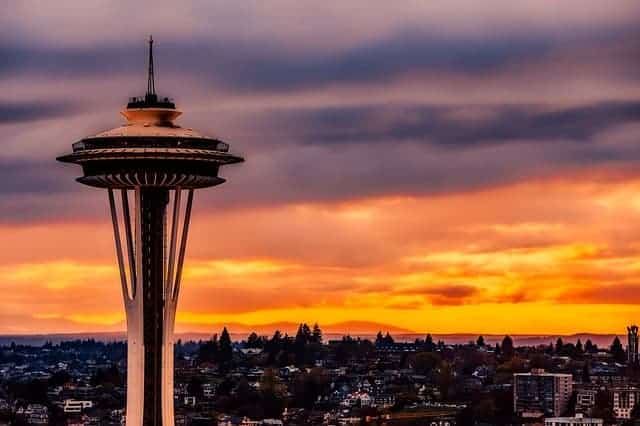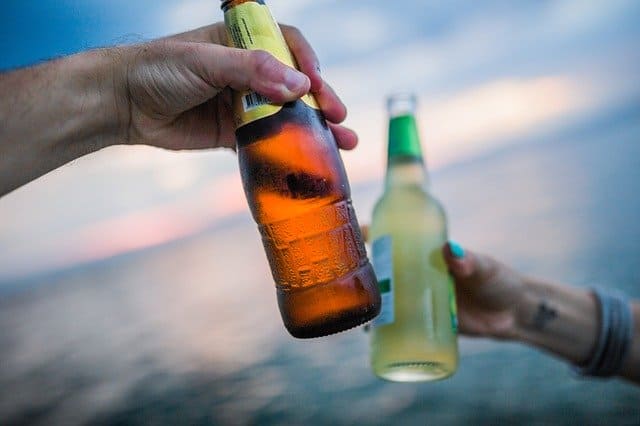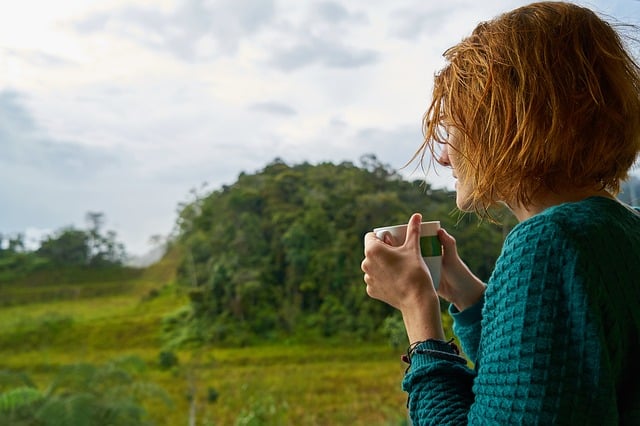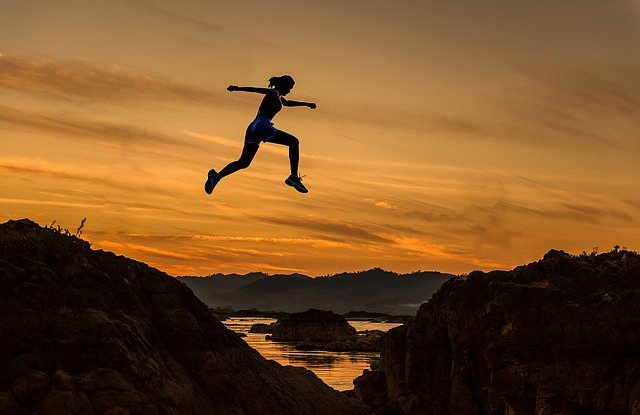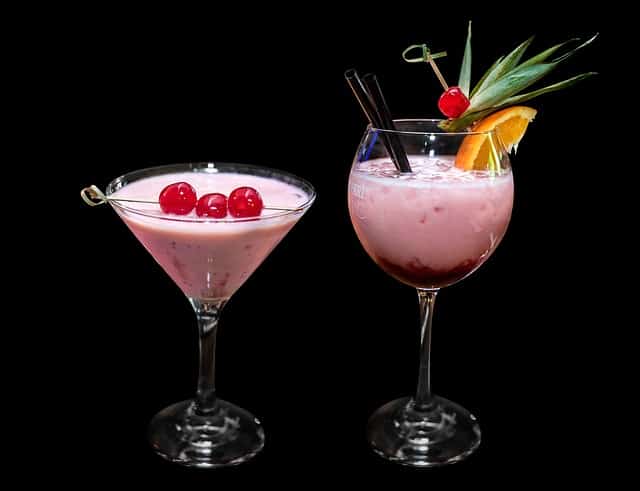The United States of America officially has an alcohol problem. In fact, it’s had the problem for years, easily pre-dating the current opioid crisis.Believe it or not, Americans are drinking more now than when Prohibition was enacted, and, each year, more and more of our citizens are increasingly becoming in need of alcohol rehab services, such as detox, therapy, and ongoing addiction treatment.
“January’s special flavors would be dark chocolate and coffee, those pick-me-ups we all needed to start the day – or a new year. A little trial by fire could do you good. After all, if it worked so well with raw cacao and coffee beans, it could work for others, including me.” – Judith Fertig, author of “The Cake Therapist”
Federal health statistics all say the same – a rise in per-person alcohol consumption, more alcohol-related ER visits, more hospitalizations, and more premature deaths linked to drinking. In fact, according to the Centers for Disease Control and Prevention (CDC), more than 88,000 U.S. citizens die each year as a result of excessive drinking. That’s more than the opioid-related deaths seen currently in the opioid epidemic.It doesn’t end there. Excessive consumption of alcohol is linked to chronic medical issues, such as liver cancer, high blood pressure, stroke, and heart disease. Pregnant women who heavily consume alcohol risk miscarriage, stillbirth or birth defects. And the list of damaging effects from heavy drinking and alcoholism go on and on…
“Consumption has been going up. Harms (from alcohol) have been going up. And there’s not been a policy response to match it.” – Dr. Tim Naimi, alcohol researcher, Boston University
In the state of Washington, the official health statistics around alcohol consumption don’t look any better. In fact, in several cases, they’re significantly worse than the national average. The rate of AUDs and other excessive alcohol consumption (including binge drinking) per capita is higher than the national average. For example, one deeply disturbing statistic is, in Ferry County, WA, the rate of car accident deaths involving alcohol at stands at 63% – far, far higher than the national average.Another directly related statistic concerns the economic burden that is placed on the state from this excessive alcohol consumption. Every year, it amounts to an exceptionally high figure of around $5.8 billion – again, above average. This burden primarily consists of losses in workplace productivity, health care expenses, criminal justice expenses, motor vehicle crash costs, and property damage.
Alcohol Use Disorder in WA State vs the U.S.
Using official data taken from the 2011 and 2012 National Survey of Drug Use & Health data reports, Washington state has a significantly higher rate of alcohol use disorder per capita than other states in the U.S. in each age demographic:
- 12-17 years of age: 1.57%, compared to 1.34% across the U.S.
- 18-25 years of age: 7.19%, compared to 6.01% across the U.S., and
- 26+ years of age: 3.26%, compared to 2.90% across the U.S.
You could say that the whole of Washington state is in need of a “Dry Year,” let alone just a “Dry January.”
What is “Dry January”?
“Dry January” is officially a British thing. Kind of.Launched as a health campaign by the charity Alcohol Concern (now Alcohol Change UK), across the four constituent countries, in January 2013, the idea of remaining alcohol-free for (at least) the first month of the year has slowly caught on around the world, thanks predominantly to social media.However, it’s an exceptionally similar concept to something the good people of Finland first adopted way back in 1942 as part of its war effort – “Sober January.” Those good people of Finland didn’t really take to the idea, to be honest.Alcohol Concern actually registered the term “Dry January” in mid-2014, following the campaign of the same year, when 17,000 Britons gave up their alcohol for the month (that’s if they drank in the first place, that is). The charity proudly proclaims only one rule for its participants: “No alcohol from when you wake up on New Year’s Day until 1 February.” That’s it.Simple… or so you’d think. To quote the charity further:“Taking part in Dry January is a chance to ditch the hangover, reduce the waistline, boost your energy, and save some serious money while doing your body a lot of good. More importantly, it’s a way to reset your relationship with alcohol and drink more healthily year-round.”So, the all-important question – does it work? This article will determine the effectiveness of Dry January in the UK, how the concept translates in the U.S., and determine how best the residents of Seattle, Washington state, can remain alcohol-free for January, and, perhaps, the entire year.
Does Dry January Work?
The UK’s Dry January campaign now has around 4,000,000 participants each year, a good-sized demographic to warrant a study or two. Of the data now collected, the evidence is clear – according to the charity’s Chief Executive, Dr. Richard Piper, participants have only a couple of reasons for following the Dry January rule:
- As a “temporary abstinence restriction,” meaning, come February, alcohol is back on the menu, or
- As a “specific intervention,” by using the structured, psychology-informed support package, to actually stop drinking entirely, and then to remain sober
One study, in 2018, took medical readings from 94 people before and after the month off alcohol – these participants were moderate to heavy non-dependent drinkers. The results showed the following:
- Improved insulin resistance
- Lower weight
- Improved blood pressure, and
- A reduction in cancer-related growth factors
In a 2019 study, over 6,000 Dry January participants were surveyed; it was found that:
- 86% had saved money
- 81% felt more in control of their drinking
- 70% were sleeping better
- 67% had better concentration
- 66% had more energy
- 65% had generally better health, and
- 54% had lost weight
Lastly, if you think Dry January invariably leads to “Crazy, Binge-Filled February,” think again. A 2015 study demonstrated that Dry January “is unlikely to result in undesirable rebound effects.”
What is the “Sober Curious” Movement?
In our social media-empowered world, a popular message can spread rapidly – and far, far quicker than before people started to record, share and comment on their own lives with Instagram, Facebook, and so on. Loosely termed the “Sober Curious” Movement, the idea of actively being alcohol-free has been gaining a clear momentum across the nation in recent years. Sober Curious is abstaining from alcohol for a period of time – achieving abstinence, but not because of addiction. The concept is all about the associated health benefits, and its popularity (and take-up rates) rises at this time of year. It’s seemingly now the fashionable New Year’s resolution to declare to others across any social media platform that you can lay your hands on. And it’s popularity increases year-on-year, as more and more “sober influencers” become popular too.Here’s a thought. Did you know that there are nearly 500,000 current Instagram posts with the hashtag #soberissexy?It begs the question… Why is wearing your sobriety like a badge (drinking non-alcoholic drinks, like mocktails, in trendy “sober bars”) now so popular? Clearly driven by millennials, one train of thought is that it is guiding people toward adopting a healthier lifestyle to resolve their problems – problems that, in the past, have made people reached to the bottle for. It is possible that people are achieving the same sense of belonging and community (thanks to the sense of community that social media thrives on) that alcohol falsely promises.It certainly looks like the mocktail-drinking, sober curious people of the movement are generating a solid momentum to their original concept. However, whether that momentum is powerful enough to push sober bars and mocktails into becoming a truly established part of our American social life remains to be seen.
The Rise of the Mocktail
A mocktail is best described as a cocktail without the liquor, where distinctive flavors are provided by the fresh mix of juices, sodas, and infused waters, as well as many other non-alcoholic ingredients. Modern mocktails are easily as sophisticated in their preparation as their alcoholic cousins – maybe even more so, as the range of flavors is possibly greater.However, as clear as their recent rise in popularity is, mocktails have been around for many years, first coming to prominence in the early-mid part of the last century. Examples of popular 1950s mocktails include the Shirley Temple, the Roy Rogers, and the Arnold Palmer – all named after famous celebrities of the time. They were developed to offer the same level of sophistication and presentation as the cocktail, as well as the similar service associated with the alcohol-based version. Who knows? Maybe, as the mocktail’s popularity grows, we will all soon be enjoying the Jay-Z, the Ryan Reynolds, or even the Greta Thunberg, in a fashionable sober bar with friends on a Saturday night-out?
“My vision is you walk into a bar and you say, ‘I want a cocktail,’ [and they’ll ask] ‘with alcohol or without’? The younger generation is questioning all of the norms that we have set… They’re not taking anything for granted. Just because it’s always been done this way doesn’t mean that it has to continue to be.” – DRY Soda Co. CEO Sharelle Klaus
Being Sober Curious & Alcohol-Free in Seattle, WA
If you’re wondering if this new non-alcoholic social scene has finally hit Seattle yet, do not fear – it’s already well and truly here. Those who wish to be “sober curious” in Seattle now have a wide variety of sober bars to choose from as the possible venue for a night out with friends, all serving a diverse range of the most popular mocktails, as well as their own home-grown creations – their “house” mocktails.And it’s not just the “sober curious” who are catered for today in the sober bars of downtown Seattle and those further afield. The alcohol-free trend, known as the “sober spectrum,” includes other movements and demographics too, such as:
- Those who identify as alcoholics in recovery
- Those who are sober as a lifestyle choice
- The “Cali Sober,” who abstain from alcohol but use marijuana, and
- The “Sober Curious,” of course – those who may only drink on occasion or who may temporarily abstain from alcohol as part of a “Dry January” or “Sober October” campaign
What are Seattle’s Most Popular Mocktails?
Here’s a “taste” (no pun intended… ok, maybe) of the most popular mocktails being freshly prepared and served in the sober bars in and around Seattle in January, 2020:
- Chili-Lime-Pineapple Soda: Originally developed by the Seattle Seltzer Co., this hot, fruity soda is a relatively simple mix of an infused juice blended with club soda.
- Mango Mule: Many mocktails are inspired by their existing alcoholic versions. The Mango Mule, as you might guess, drops the vodka of the Moscow Mule, replacing it with honey syrup and mango puree, nectar or juice.
- Lemon-Lavender Mocktail: This mocktail is a blend of lavender-infused simple syrup and fresh lemon juice, with a touch of grenadine to add a distinctive flavor.
- Virgin Mary: Simply, a Bloody Mary without the vodka. Yes, that’s it. Simple.
What are the Most Popular Sober Bars in Seattle?
If you are looking to decrease your alcohol consumption for January, or just to simply see for yourself the draw of the sober bar, here are a few of the most popular places to be seen sipping a mocktail or two, right now in Seattle:
- Carlile Room (in Downtown Seattle): Tom Douglas’s swanky lounge offers a “booze-free” menu, with highlights including a house ginger ale, kombucha (a gelatinous mass of symbiotic bacteria and yeasts, and prepared by fermenting with black tea and sugar) on tap, and the “party in pink mocktail.”
- Deep Dive (in South Lake Union): Capture the ambiance of the Amazon, with a host of mocktails, including their house Manhattan, “piña fauxlada,” a chai gimlet, a cranberry sour, and a pineapple mule – all made with different variations of Seedlip, a distilled non-alcoholic spirit.
- Dumpling Tzar (Capitol Hill): Or how about a shrub-based mocktail, with a pile of doughy Russian dumplings?
- Eight Row (Green Lake): Now serving a seasonal selection of house-made sodas and shrubs, including a pineapple Szechuan soda.
- Fog Room (in Downtown Seattle): Enjoy waterfront views from this rooftop bar, serving mocktails such as the quirkily-titled “Ironic” (grapefruit, passionfruit, lime, cinnamon syrup, orgeat, and mint), and the “Sodajerk” (pineapple, turmeric, white peppercorn, and soda water).
- Kamonegi (Fremont): This pint-sized soba restaurant is now serving their own house-made sodas with their noodles, including ginger lemongrass, and hibiscus red shiso grapefruit.
- L’Oursin (Central District): The charming French bistro now includes the all alcohol-free “le bergamot” (citrus cordial, bergamot, and tonic), “le squirt” (grapefruit, lemon, pink peppercorn, and cinnamon), and the “amoxicillin” (lemon, honey, ginger, and peated barley), amongst others.
- Life on Mars (in Capitol Hill): This all-vegan bar is now serving a range of mocktails made with Pok Pok chef Andy Ricker’s Thai-inspired drinking vinegars: “Tiki Night” (berry shrub, coconut, and lime), and the “110 Thai” (Thai basil shrub, lime, and tonic).
- Navy Strength (Belltown): Specially for January, the award-winning tiki cocktail bar has alcohol-free specials, includingthe “Hollow Trance” (Seedlip Spice, fresh coconut water, citrus, and cinnamon), and the “Grace O’Malley” (blueberry falernum syrup, kalamansi).
- The Royal Room (Columbia City): Finally, if you fancy mixing a mocktail with taking in a show at the Columbia City venue, why not do just that with the “Florida Greyhound” (fresh grapefruit juice with a splash of Sprite, soda, and an orange twist), or the “Magda Rita” (limeade, hibiscus syrup, and soda)? Familiar flavors, 100% liquor-free…
Alcohol Addiction Recovery in Seattle
Undoubtedly, and certainly judging by the alcohol statistics seen above for Washington state, there are many people seeking a more permanent form of abstinence from alcohol in and around Seattle – not just for the month of January, or as part of another social media-directed, alcohol-free campaign.Northpoint Seattle offers the perfect opportunity to begin your recovery from AUD, with our outstanding outpatient rehab treatment options, available at both our Bellevue and Seattle facilities, including services such as:
Psychiatric care and medications for co-occurring disorders
Holistic activities, such as therapeutic yoga, mindfulness, experiential therapy, and grounding techniques
Behavioral therapy
Family therapy
Group sessions and support
Relapse prevention practices
Educational classes and skill-building activities
Are you interested in becoming alcohol-free? Have you ever participated in a Dry January or a Sober October? What were your experiences, and how did you find it? Please let us know your thoughts with a comment below. And, if you’ve never tried a mocktail before, what are you waiting for? Mocktails are seriously delicious.

